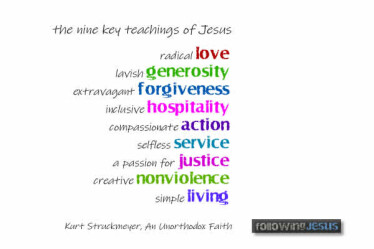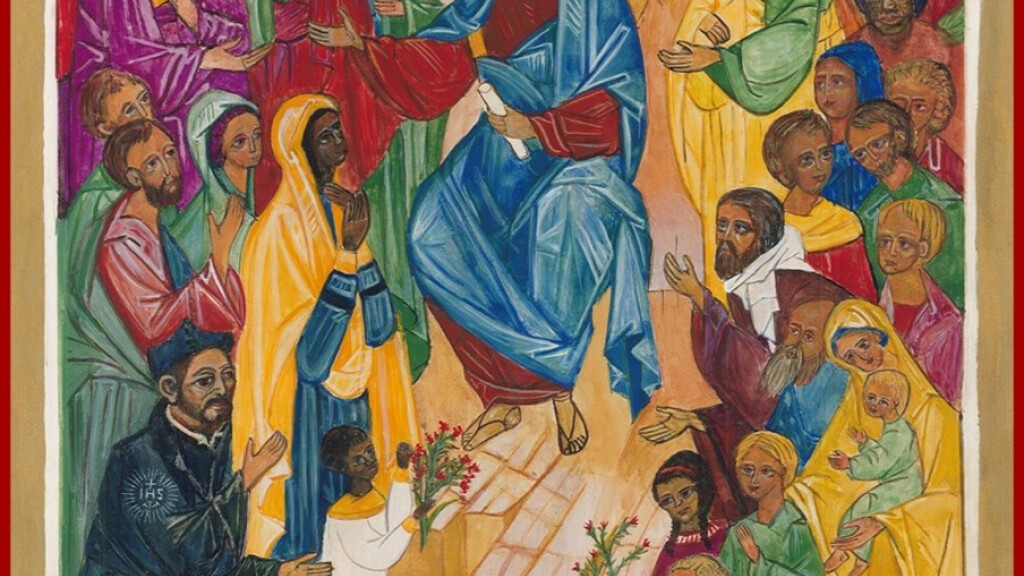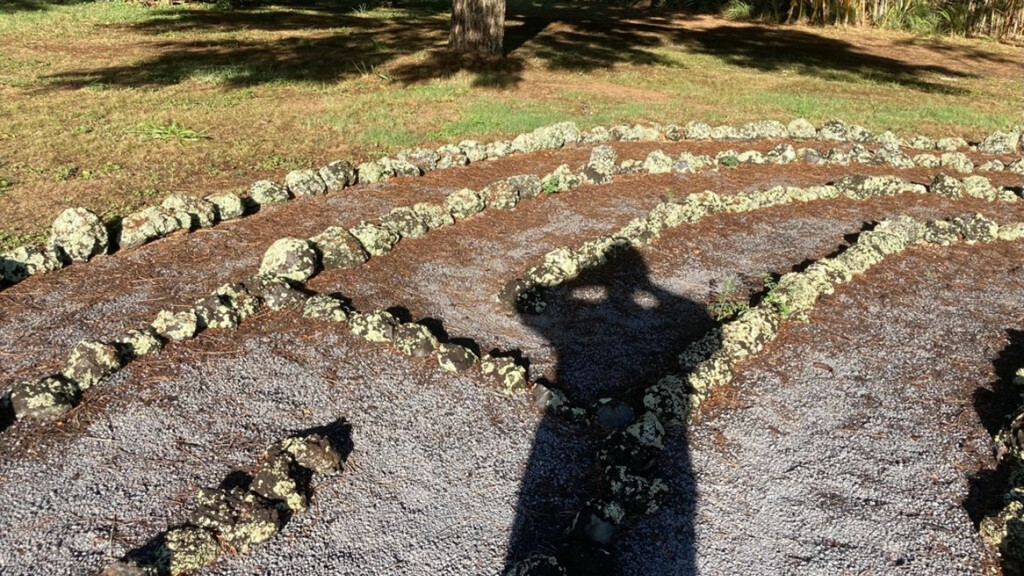July 30, 2023 | Rev. Loren McGrail
Freeing Jesus Sermon Series: Jesus as Teacher
Jesus the Third Way or Creative Nonviolence
Matthew 5: 38-42
Rev. Loren McGrail
Holmdel Community United Church of Christ
July 30, 2023

Jesus was a teacher, an interpreter of Moses’ law, a storyteller. He did not issue a set of rules or tell us what to do as much as he asked us to become like him and become love. Nonetheless there are some key teachings, are there not?
Dear Ones, I would like to start by asking you to turn to the end of your bulletin and look at that list of nine teachings. If you read your e-news you will be prepared for the question. I would like you to read this list and choose three that are most important to you. Which one or ones are least important? I invite you to ponder your choices.
Let’s see a show of hands for your number one choice. Who chose radical love? Lavish generosity? Extravagant forgiveness? Inclusive hospitality? Compassionate action? Selfless service? A passion for justice? Creative nonviolence? or simple living? Which one do you think I chose?
Creative nonviolence. Loving our enemies and putting away our swords seem to be the most difficult of Jesus’ teaching. We are called to insist on the truth of our common humanity. Dr. Rev. Martin Luther King, Junior’s words are helpful here: “Through violence you may murder the murder, but you can’t murder murder, through violence you may murder the hater, but you can’t murder the hate…Darkness cannot put out darkness, only light can do that.”
To not resist with violence not only reaffirms our own humanity but also that of the one dehumanizing you. So, between violence and passivity is active or creative nonviolence, what the late theologian Walk Wink called Jesus’ Third Way. For Wink and I and perhaps you, the reign of God or the Beloved Community can only be achieved by equality and nonviolence. Nonviolence is not a means to the kin-dom but the way itself.
This way of thinking was not new or exclusive to those following Jesus. The Hebrew midwives and Pharoah’s daughter were already not cooperating with Pharaoh when Moses was saved and later all the Hebrew children. Jesus was an insightful and inspiring Jewish teacher and more.
Let’s turn now to our text today, Matthew 5:38-41:
“You have heard that it was said, ‘An eye for an eye and a tooth for a tooth.’ But I say to you: Do not resist an evildoer. But if anyone strikes you on the right cheek, turn the other also, and if anyone wants to sue you and take your shirt, give your coat as well, and if anyone forces you to go one mile, go also the second mile. Give to the one who asks of you, and do not refuse anyone who wants to borrow from you."
Many have interpreted Jesus’ command to not resist evil as a command to become docile or compliant, to allow the oppressor to walk all over us. But the Greek word is antistenai, pronounced On Tea Stem, does not mean that you should not resist. A proper translation would be, “Don’t strike back at evil in kind” or “Do not retaliate against violence with violence.” or even “Don’t react violently against the one who is evil.” King James’ faithful scholars translated antistenai as “resist not” instead of “Do not react violently against the one who is evil because King James did not want people concluding that they had any recourse against his or any other sovereign’s unjust policies. The translators were translating non-violent resistance into docility.
Let’s remember who Jesus was speaking to. His listeners were the people who were beaten, sued, and subjected to forced labor. They were people who had to stifle their inner outrage at the dehumanizing treatment meted out to them day after day. They were being dehumanized by imperial practices and policies. They also had no armies or weapons.
Let’s look at the examples Jesus gives for how to respond to a variety of violent situations. The first example is about physical violence, about what to do if you are physically assaulted. If anyone hits you on the right cheek, turn the other also. In the time of Jesus, the left hand was only used for unclean tasks. To even gesture with the left hand carried a penalty. When you turn your check, the blow has to be with the left hand or a punch which means you are equals. The message sent to the striker then is, “I deny you the power to humiliate me. I am your equal. I will not be demeaned.” The response, far from suggesting passivity and cowardice, is an act of defiance.
And yes, you could be flogged for your defiance, your non-violent active resistance will cost you. Think of the march for civil rights across the Edmund Pettus Bridge. Remember the attacking dogs and fire hoses?
In the second example, someone is being sued for his outer garment. If anyone wants to sue you and take your coat, give your inner cloak as well. Jesus’ audience, the poor, are those with only two garments, an inner and outer. The situation that Jesus refers to would have been all too familiar. The poor debtor has sunk ever deeper into poverty, the debt cannot be repaid. He is hauled into court to have the only thing he has left, his outer garment, taken. Jesus’s council to give over your inner garment as well means marching out of court stark naked. You have said in effect, “You want my robe? Here, take everything! Now you’ve got all I have except my body. Is that what you will take next?” Nakedness was taboo in Judaism, and the shame fell not on the naked party, but on the person viewing or causing one’s nakedness. The poor person does it to bring shame on the person bringing the suit. This unmasking offers the creditor to see himself and repent.
Lastly, go another mile. Roman soldiers carried 60-70 lb. packs and they could force subjected people to carry their packs. However, a soldier could not force a civilian to carry his pack more than 1 mile. To force the civilian to go farther would result in severe penalties for the soldier under Roman military law. Rome wanted to limit the anger of the occupied Jews but keep its army on the move. So, what does it mean then to go the second mile? From a situation of servitude, you have seized the initiative.
You have also exposed the fangs of oppressor for all to see. Imagine the Roman infantryman pleading with a Jew, “Give me back my pack.”
I have many examples of what nonviolence looks like in practice as I have been part of many different movements, but I will end with just two. One is from a few years ago during the height of violence in Jerusalem when almost all Palestinian men were frisked and harassed daily by Border Police. A number of young men decided they would call out this discriminatory practice by wearing their underwear with their ID cards hanging from their necks. This protest was a way to make visible to everyone the injustice of this assault on their dignity.
My last example is happening right now in Israel by Israelis themselves against their own government which just voted to remove the oversight of their Supreme Court on actions or policies taken by their executive leaders. Gone are the checks and balances. There have been large protests in the streets for weeks leading up to the vote and still. There is also a not so known nonviolent action going on. Many are refusing to be reservists. All Israelis must serve in the military and then serve as reservists for the rest of their lives. If you refuse and become a Refusenik you will be imprisoned. Those who are refusing to serve are trying to send a clear message to their government; they are using the nonviolent tool of noncooperation and willing to risk the consequences.
Dear Ones, let us listen to Jesus our teacher. Jesus calls us to a third way which is neither violent nor passive by which is to resist evil without becoming evil. I invite you to pay attention to the places and spaces in your life where you can follow this third way. Let us follow the teachings of Rabbi Jesus by embracing his word and living his wisdom.
Series Information







